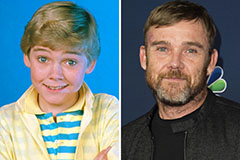Portrait painting is a captivating art form that seeks to capture the very essence of a subject. Skilled artists read more utilize a variety of techniques to illustrate not only the physical attributes but also the inner spirit of their models. By means of careful observation and a deep insight into human feelings, portrait painters create works of art that are both faithful and poignant.
A genuine portrait is more than just a resemblance; it's a glimpse into the heart of the person being illustrated. Renowned portrait painters throughout history have created behind a treasure trove of masterpieces that continue to inspire viewers today.
Brushstrokes and Emotion: Unveiling the Soul Through Paint
A painting is more than just a visual depiction; it embodies a world of emotions waiting to be uncovered. Each mark of the brush transmits a fragment of the artist's soul, connecting together bold hues to build an emotional narrative.
The intensity of a line can express anger, while the smoothness of a curve might hint at peace. Tone, too, plays a powerful role, instilling a spectrum of emotions from happiness to melancholy.
By studying these parts, we can begin on a exploration to interpret the artist's intentions and, in consequently, gain a deeper understanding of the human existence.
Exploring Portraits
A journey into portraiture goes far beyond the mere depiction of a person's physical form. It seeks to capture the soul of a subject, revealing their inner world. Portraiture is a powerful medium for creators to examine the human nature.
With the stroke of a brush or the click of a camera, portraiture allows us to connect with individuals on a deeper level.
A Glimpse into Humanity: Exploring Portraits Through Time
Portraits reflect the essence of humanity across time. From early civilizations to the modern era, artists have employed their craft to immortalize the human experience in paint, sculpture, and photograph. Each canvas becomes a portal into the lives, thoughts, and emotions of those who sit.
- Examining these portraits reveals not only individual stories but also societal trends and cultural shifts. They serve as a permanent record of human emotion, allowing us to commune with the past and gain a deeper awareness of our shared heritage.
The Painted Gaze: Power and Presence in Portraiture
Portraiture has occupied a place a fascinating arena/domain/stage where power and presence are woven together. From the regal countenances/visages/features of monarchs to the unassuming/modest/simple expressions of everyday individuals/persons/folk, each painted gaze offers/presents/reveals a unique window into the dynamics/nuances/complexities of society/human interaction/the human condition.
The artist's/painter's/creator's skill in capturing not only the physical likeness but also the essence/spirit/character of their subject is what truly elevates/transforms/enhances a portrait from a mere depiction/representation/illustration to a powerful statement/reflection/work of art.
Through careful use of composition, light, and color, artists have employed the painted gaze to convey/communicate/express a range of emotions, happiness to grief, and to underscore/highlight/emphasize the status/position/rank of their subjects within society/their world/the hierarchy. A portrait can be a vehicle for personal expression, reflecting the values/beliefs/ideals of the era in which it was created.
From Realism to Impressionism: The Evolution of Portrait Painting
Portrait painting underwent a significant transformation from the strictures of Realism to the free-flowing aesthetics of Impressionism. Realist artists, such as Gustave Courbet and Jean-Auguste-Dominique Ingres, sought to capture the world faithfully, focusing on minute details and a realistic depiction of their subjects. Their portraits often conveyed a sense of weighty contemplation.
In contrast, Impressionist painters like Edgar Degas and Pierre-Auguste Renoir embraced a more individualistic approach. They were less concerned with capturing precise details and moreover sought to convey the fleeting effects of light and color. Their portraits are characterized by loose brushstrokes, vibrant hues, and a sense of energy. The shift from Realism to Impressionism reflected a broader cultural change, embracing new ideas about perception and the role of the artist.
 Kel Mitchell Then & Now!
Kel Mitchell Then & Now! Molly Ringwald Then & Now!
Molly Ringwald Then & Now! Charlie Korsmo Then & Now!
Charlie Korsmo Then & Now! Melissa Joan Hart Then & Now!
Melissa Joan Hart Then & Now! Ricky Schroder Then & Now!
Ricky Schroder Then & Now!